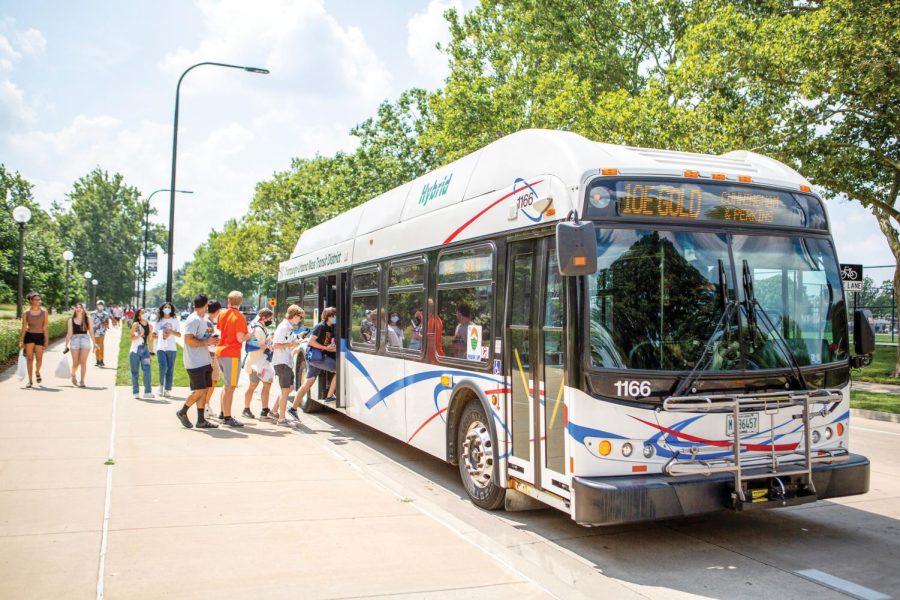Increased ridership results in delays for MTD buses
Students aboard the 10E Gold MTD bus after the Freshman Welcome Celebration and Convocation on Aug. 20. Students experience difficulties with the MTD buses due to frequent delays and an increase in riders.
March 23, 2022
Emily Kubik, freshman in DGS, walked to her bus stop with the assumption that the bus would not arrive at the listed time. This was something she’d grown accustomed to.
“I feel that I’ve kind of gotten used to showing up like two minutes before the arrival time assuming they might be early or assuming they might be late,” Kubik said. “Typically, they’re later.”
Kubik is one of many students who have been affected by the Champaign-Urbana Mass Transit District service reductions for bus routes. For this reason, these students wonder why their bus is always late.
Amy Snyder, chief of staff at the MTD, said that increased ridership is the reason students might see buses showing up later than expected.
“When our busses are fuller, it takes more time at each stop,” Snyder said. “We want to make sure people can board and leave safely.”
Get The Daily Illini in your inbox!
While service has been reduced, the number of students who rely on public transportation has not shrunk. Snyder said that this is causing the busses to be even fuller than usual.
Kyle McClain, lead instructor for the Safety & Training Department at the MTD, said that operators are trying to make sure as many people as possible can ride on the busses.
“We try to accommodate all of the passengers that we can,” McClain said. “Our increments are not as frequent, so our operators are definitely holding back, trying to get as many people as we can on the bus.”
Snyder said that the service reductions can also be attributed to the ongoing operator shortage the MTD is facing.
“We’ve cut about 20% of our service from what we did pre-pandemic,” Snyder said. “That’s due solely to the fact that we don’t have enough competent operators who have been adequately trained, and we won’t compromise on safety.”
These service reductions affected most of the bus routes available to students. Snyder said that the reductions were decided based on the frequency and the number of riders in areas. For areas with less frequent busses or fewer riders, the cuts were larger.
Though many of the routes received service reductions, Snyder said that no routes were cut entirely.
“We wanted to protect coverage and to make sure all corners of the community have service,” Snyder said.
Snyder also said that she understands the impact the service cuts have had on the people who rely on public transportation.
“People are relying on transit to get to class, to medical appoints or maybe just to visit a family member,” Snyder said. “I don’t ever want to dismiss what the cuts did, because it’s very personal.”
McClain echoed this sentiment, saying that he doesn’t enjoy seeing riders having difficulty getting to their destinations in a timely manner.
Snyder also said she expects the service reductions will remain for some time because of there are many safety and training requirements for being an operator.
“We’re going to do everything that we can to turn it around, and I do believe that someday we will,” Snyder said. “But I think people can expect to see the service levels they’re seeing now in the fall.”
Snyder said that MTD is currently working on projects to improve their technology and to provide more information for people waiting at bus stops. Snyder also encouraged riders to provide them with feedback through their site or over social media.
“We are not satisfied with the level of service, and we strive to provide the community with what they need,” Snyder said. “We’re doing everything that we can on our end to rebuild our workforce and to provide a quality product.”







